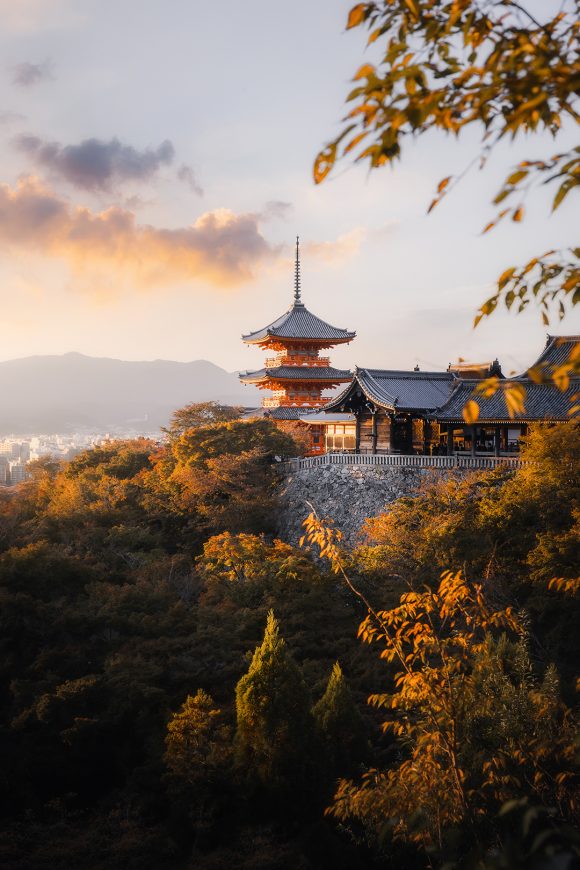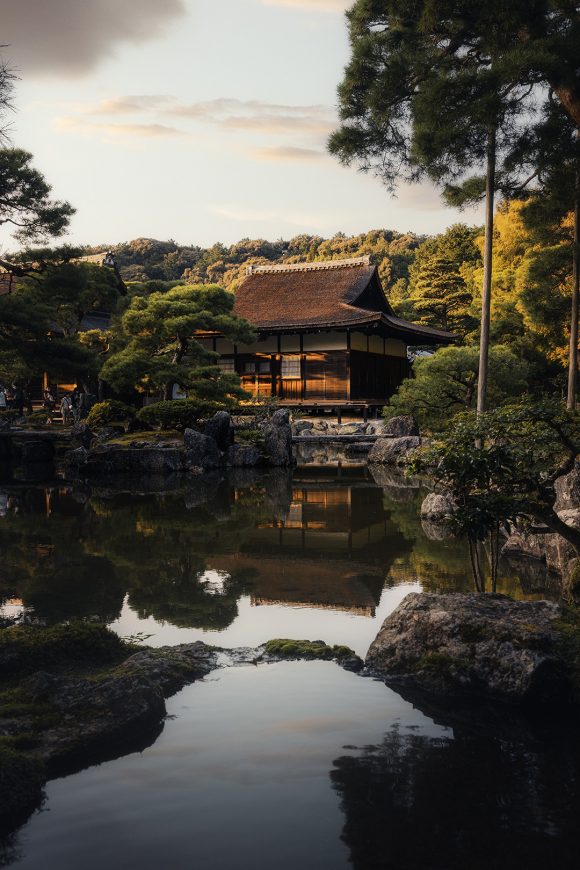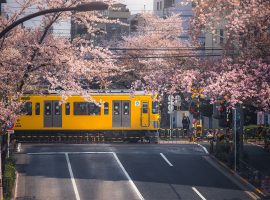
5 most incredible temples and shrines in Kyoto
NAVIGATION
Kiyomizu-dera Temple
Best travel & photo spots in Kyoto
Kiyomizu-dera is a Japanese Buddhist temple in Kyoto. The temple, which was built in the eighth century, is a UNESCO World Heritage Site. Its name means “pure water,” and it relates to three sacred springs that pour forth at various spots around the temple.
Kiyomizu-dera Temple is made up of various structures, the most important of which is devoted to Amida Nyorai Buddha. The 13-meter balcony on the temple’s southern side is one of its features. From here, you have a wonderful view of Kyoto as well as the horizon towards Japan’s vast hinterland – especially attractive in fall or spring with a bright blue sky!
Find detailed information about Kiyomizu-dera Temple in this blog post.
Fushimi Inari Shrine
Best travel & photo spots in Kyoto
Fushimi Inari Temple is a Shinto shrine in Kyoto whose origins may be dated back to the year 711. The complete temple complex is located in the south of Kyoto and is one of Japan’s most well-known and visited shrines. Thousands of red torii gates wind for 4 kilometers through the forest, leading visitors to the summit of Mt. Inari. Along the route, you’ll come across a number of tiny shrines and statues. You may appreciate nature to the fullest and unwind for the day here!
Want to know more about visiting Fushimi Inari shrine? Find out more!
Enkouji Temple
Best travel & photo spots in Kyoto
Kyoto’s Enkouji Temple is a Buddhist temple surrounded by a stunning diversified garden and ponds. The Enkouji Temple, divided into a little bamboo forest, an attractive moss garden, and a rock garden, welcomes you to amaze and relax. The temple is most recognized for its Zen culture.
Interested to find out more? Look here!
Kinkaku-ji Temple
Best travel & photo spots in Kyoto
Kinkaku-ji Temple, popularly known as the “Golden Pavilion,” is a Zen Buddhist temple in the Japanese city of Kyoto. The temple was constructed in the 14th century and is remarkable for its golden exterior composed of actual gold leaf. Kinkaku-ji Temple is a UNESCO World Heritage Site and one of Kyoto’s most recognized attractions. Kinkaku-ji had a significant impact on Japanese art. It represents both the structure’s stunning construction and the deeper meanings underlying it.
The temple is set in a lovely landscape created in traditional Japanese style. Visitors can wander through the garden and take in the stunning views of the lake and surrounding landscape. Furthermore, Kinkaku-ji Temple is well-known for its spiritual significance and is frequented by those seeking peace and tranquility.
Kinkaku-ji is the most visited temple in the city throughout the day. A visit at opening time is worthwhile, but even then, expect lengthier lines. Arrive at the entrance 15 minutes before the gate opens.
Ginkaku-ji Temple
Best travel & photo spots in Kyoto
Kyoto’s Ginkaku-ji Temple is a Buddhist temple. It was designed as a replica of the Kinkaku-ji Pavilion and is also known as the Silver Pavilion. The Ginkaku-ji Temple was started in 1482 as a vacation house for Shogun Ashikaga Yoshimasa but was never finished. Its garden restoration began in 1955, and the site has been renovated multiple times since then.
Ginkaku-ji Temple is a well-known tourist attraction in Kyoto, and it comprises of various structures, including the main pavilion, the meditation hall, and the world-famous sand garden. The Sand Garden enables guests to meditate and it represents the ocean sea with irregular sand and pebble wave patterns. The lovely grounds are great for photographers interested in exploring the Japanese landscape. A little trail leads out the hill overlooking the entire temple complex through the gorgeous moss garden.

















